This article has been reviewed according to Science X's editorial process and policies. Editors have highlighted the following attributes while ensuring the content's credibility:
fact-checked
preprint
trusted source
proofread
Primordial black holes can only explain a fraction of dark matter, research suggests
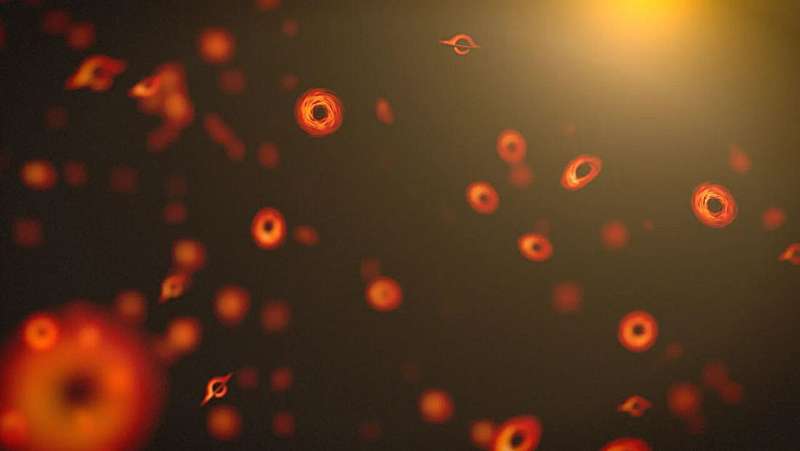
What is dark matter? That question is prominent in discussions about the nature of the universe. There are many proposed explanations for dark matter, both within the Standard Model and outside of it.
One proposed component of dark matter is primordial black holes, created in the early universe without a collapsing star as a progenitor.
The dark matter problem is a missing mass problem. Galaxies should not hold themselves together according to their observable mass. Their observable mass is stars, gas, dust, and a sprinkling of planets.
Some other form of mass must be present to prevent galaxies from essentially dissipating. Dark matter is a placeholder name for whatever that missing mass may be. Astronomer Fritz Zwicky first used the term in 1933 when he observed the Coma Cluster and found indications of missing mass. About 90% of the Coma Cluster is missing mass, which Zwicky called "dunkle Materie."
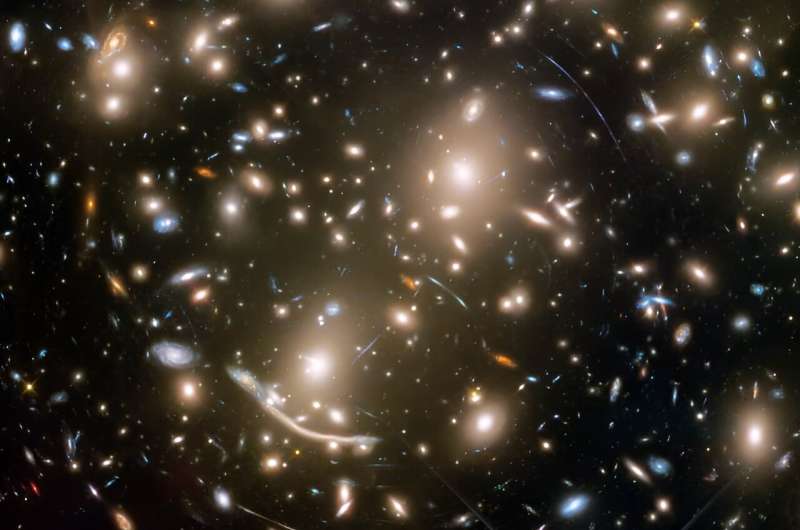
Primordial black holes (PBHs) are one leading candidate for dark matter. In the universe's earliest times, pockets of dense subatomic matter may have formed naturally. Once dense enough, they could've collapsed directly into black holes. Unlike their astrophysical counterparts, they had no stellar progenitors.
Recent JWST observations and LIGO/Virgo results support the idea that PBHs are dark matter. Some researchers go further and say that this evidence supports the idea that dark matter is exclusively made of PBHs and has no other components.
New research suggests that some of the early PBHs would merge and that LIGO/Virgo can detect the gravitational waves from mergers. The research is "Constraints on primordial black holes from LIGO-Virgo-KAGRA O3 events" and it is posted to the arXiv preprint server. The lead author is M. Andres-Carcasona, a Ph.D. student at the Institute of High Energy Physics at the Barcelona Institute of Science and Technology.
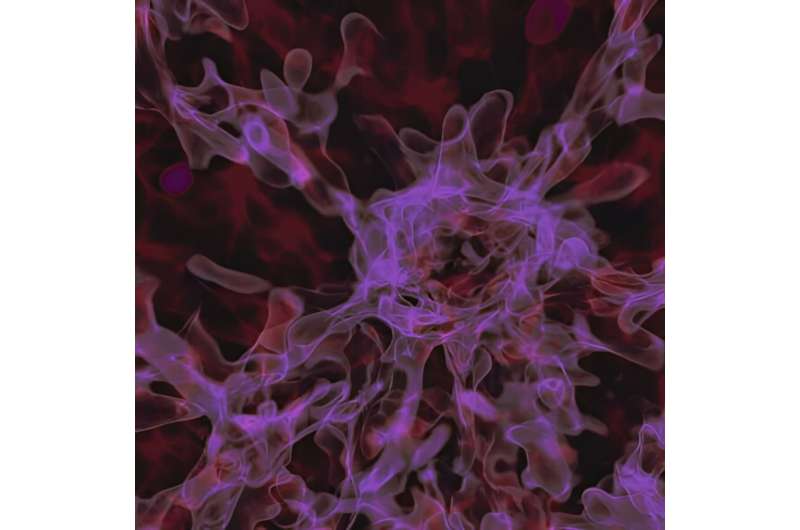
In 2015, LIGO (Laser Interferometer Gravitational-Wave Observatory) detected its first black hole merger. At the time, researchers heralded this new window into the universe. Until then, astronomical observations were based on electromagnetic radiation, but LIGO/Virgo changed that.
Now, Japan has joined the LIGO/Virgo collaboration with their Karga gravitational wave observatory, and the international effort is named LIGO/Virgo/Karga (LVK.) Together, the three observatories gather data on gravitational waves.
"Previous works have explored the use of GW data to find direct or indirect evidence of PBHs," the authors write. "Specifically targeted searches of subsolar mass compact objects, which would provide a smoking gun signal of the existence of PBHs have so far been unsuccessful."
The authors point out that within our growing body of GW data, there may be indications of PBHs that were missed by other researchers' methods. They write that some of the component masses "… fall in regions where astrophysical models do not predict them, potentially suggesting for a PBH population," they write.
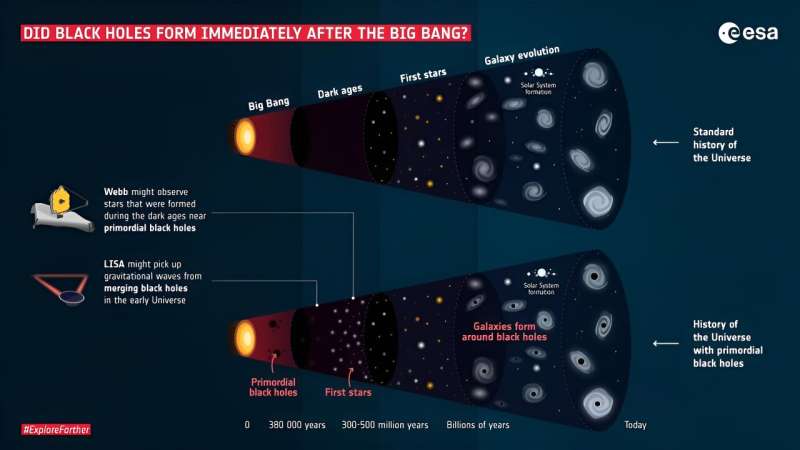
The mass function of PBHs plays a large role in the formation of PBHs. Their goal is to update the mass constraints on PBHs in GW data. "One of our aims is to derive constraints which do not depend significantly on the underlying formation scenario. Thus, we consider a variety of different PBH mass functions," they explain.
The two underlying formation scenarios they mention are astrophysical and primordial. Within the primordial category, there are different ways that PBHs can form, and they're all tangled up with mass function. The authors explain that PBHs could explain the totality of dark matter, but only if they're within the range of 10–16 to 10–12 solar masses.
"Lighter PBHs would be evaporating today and can constitute only a small portion of the DM," they write.
Astrophysical BHs form binaries and can merge, sending out gravitational waves. If PBHs merge, they would also send out gravitational waves. It's possible that some of these mergers are behind some of the GW data detected by LIGO/Virgo/Karga in its third observational run.
The researchers present their results in terms of a pessimistic case and an optimistic case. The pessimistic case says that all GW observations are from Astrophysical Black Hole (ABH) mergers, while the optimistic case suggests that some are from PBH mergers.
Their research and its results involve an awfully large number of complicated physical terms and relationships. But the main question is whether PBHs can comprise dark matter, either partly or wholly. In that context, what do the results boil down to?
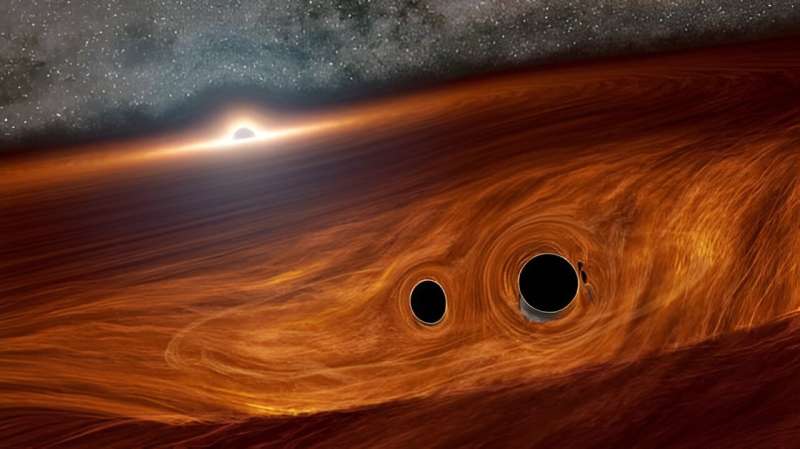
The researchers say that in their analysis of a population of both astrophysical and primordial binaries, PBHs cannot entirely comprise dark matter. At most, they can make up a small portion of it.
"… in a population of binaries consisting of primordial and astrophysical black holes, we find that, in every scenario, the PBHs can make up at most fPBH less than or equal to 10-3 of dark matter in the mass range 1–200 solar masses."
fPBH represents the fraction of dark matter that PBHs can comprise, 10-3 means 0.001, and the solar mass range is self-explanatory. It doesn't take a physicist to understand what they're saying. PBHs can make up only a tiny fraction of dark matter in their analysis.
This may not be a headline-generating study. It's a look under the hood of astrophysics and cosmology, where teams of researchers work hard to incrementally constrain and define different phenomena. But that doesn't undermine its significance.
One day, there might be a headline that screams, "Physicists Identify Dark Matter! Universe's Big Questions Answered!"
If that ever happens, hundreds and thousands of studies like this one will be behind it.
More information: M. Andrés-Carcasona et al, Constraints on primordial black holes from LIGO-Virgo-KAGRA O3 events, arXiv (2024). DOI: 10.48550/arxiv.2405.05732
Journal information: arXiv
Provided by Universe Today




















